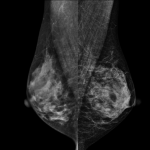Screening and diagnostic mammography
A mammogram involves taking an X-ray image of the breast. This is a leading examination for screening for breast cancer. It allows early detection of cancer, which reduces mortality.
To do this, during the examination, the breast is compressed between two plates, which spreads the breast tissue. An x-ray is then taken. Changes can be observed when there is a potentially neoplastic lesion.

Moreover, in the context of screening, it is important to specify that a positive mammogram does not necessarily mean that you have breast cancer. Indeed, only about one in 10 women with a positive mammogram suffers from a cancerous tumor. So, in the event of a positive test, you must follow the recommendations of your doctor.
Preparing for your exam
- Make an appointment within 10 days of the start of your period or when your breasts are least tender.
- Avoid coffee, tea, chocolate, wine and cola a few days before the exam and drink plenty of water to reduce breast tenderness.
- Do not wear powder, cream, perfume or deodorant on the day of the exam.
- Prior to the exam, please remove any jewelry that may interfere with the exam.
- If you have had a mammogram within the past five years, bring the images and reports with you the day of your exam. This is required for comparison purposes.
- Finally, if you are pregnant, as with all radiological examinations, please tell your doctor and the technologist who will have you undergo the examination.
Important
If you have had a mammogram within the past five years, bring the images and reports with you the day of your exam. This is required for comparison purposes.
